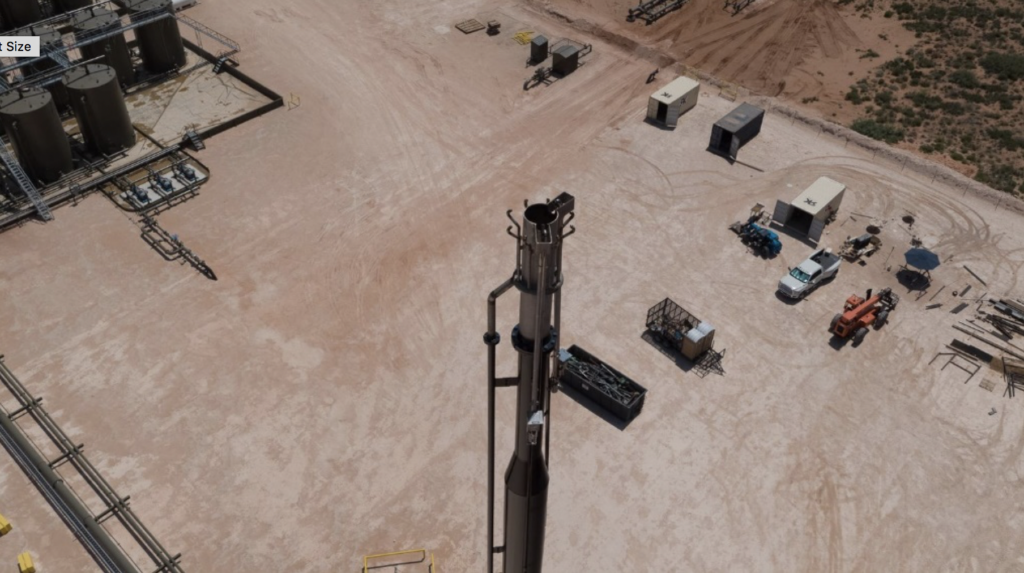
Fixed point methane sensors have been recently used to detect unexpected emissions from oil & gas production operating sites. The advantage is that they can provide near real-time data on a high frequency (nearly continuous) basis.
This is an emerging use for detecting all site emissions, including direct venting, to fugitive equipment leaks, to incomplete combustion of methane in engine exhaust and from flares. However, most of the initial deployments have been aimed at detection of unexpected fugitive emissions and venting. Therefore, downwind methane sensors are a technology development to watch – but not yet fully proven for routine flare monitoring.
Industry knowledge has in recent years pointed to potentially significant methane emissions and contributions from un-inventoried and unexpected sources. Some of these are discontinuous emissions from malfunctions or upsets (including those from flare stacks in the production segment).
There are now a variety of methane detectors that can measure concentration in ambient air. Their minimum detection limits (the lowest detectable enhancement above ambient concentrations of methane) range from 150 ppm to ≤ 1 ppb, depending on the device technology. For many sensorsSensors are devices that measure physical properties such as methane concentration, temperature, or radiance. For measuring flare efficiency the sensor must be capable of measuring methane and in some cases… Learn more…, the reliability and accuracy of the instrument have been assessed but long-term functionality of the method (which is a critical consideration for long term field deployment) is in its infancy.
Technologies vary across vendors, with from the simplest and least costly sensors to more sophisticated and sensitive sensors. Examples include metal oxide sensors and those using infraredA wavelength just greater than that of the red end of the visible light spectrum but less than that of microwaves. Infrared radiationhas a wavelength from about 800nm to 1… Learn more… absorption.
Selection of appropriate technology varies depending on the outcome desired (speed of detection, for example) but also depends upon the environmental conditions that exist at field locations, data networks and power.
Deployment also depends upon the kinds of events that the user wishes to detect. In the case of flares, recent upstream screening in onshore north American operations has shown, for some basins, an unexpectedly significant percentage of flares that were emitting and unlit. These were detected with Aerial flyover techniques but highlight the potential for more continuous detection systems.
Use of a network of these sensors requires an operating protocol (minimum duration before response, documentation of root cause analysis and follow up, etc), that are still being developed. Since flares are elevated, sensor locations on a site that can detect ground level releases may be unsuitable locations to detect flare flame outages.
Detection of these kinds of flare events with point source sensors is yet unproven, though some projects, such as Project Astra and Project Falcon, as well as other state efforts and efforts by individual companies, will deploy an array of sensors intended to detect large events including flare outages. These arrays range from simple downwind fence-line locations for production sites, to arrays that cover areas with dozens of wellsite and other production facilities.
Finally, the network for deployment must be considered. The user must consider whether there are multiple sensors on every site, whether sensors are at the right height and location to detect flare issues, and whether there is a larger network that can detect issues even with sensors located offsite and farther downwind.
Though methane sensors are an emerging technology deployment, fixed location methane sensors are offered commercially, and being tested and used in some cases to search for these types of emissions, so that an operator can detect them and mitigate them in a timely manner.
Users interested in this technique should likely monitor test deployments being implemented in 2021 and 2022. Users are referred to the test projects mentioned in prior footnotes: Project Astra, Project Falcon.
Advantages
Nearly real-time data
Frequency of measurement that is close to continuous
Sensors can work any time of day, but will be affected detrimentally by some weather conditions such as zero wind, storms, etc.
Limitations
Efficacy for detecting flare issues is not yet proven
Practical operation of a network of detectors is yet to be proven
Durability of all sensors is yet to be proven
Cost/benefit of this approach (versus others such as aerial overflights) has yet to be proven
A recommended installation guideline for flare monitoring does not yet exist
Sensors may experience issues with drift, sensor poisoning (damage through interaction with other gases) and other atmospheric interferences
Case study
Case study to be added in the future
Sensors are devices that measure physical properties such as methane concentration, temperature, or radiance. When permanently installed they can be used to identity changes in emissions, such as when flare performance has deteriorated.